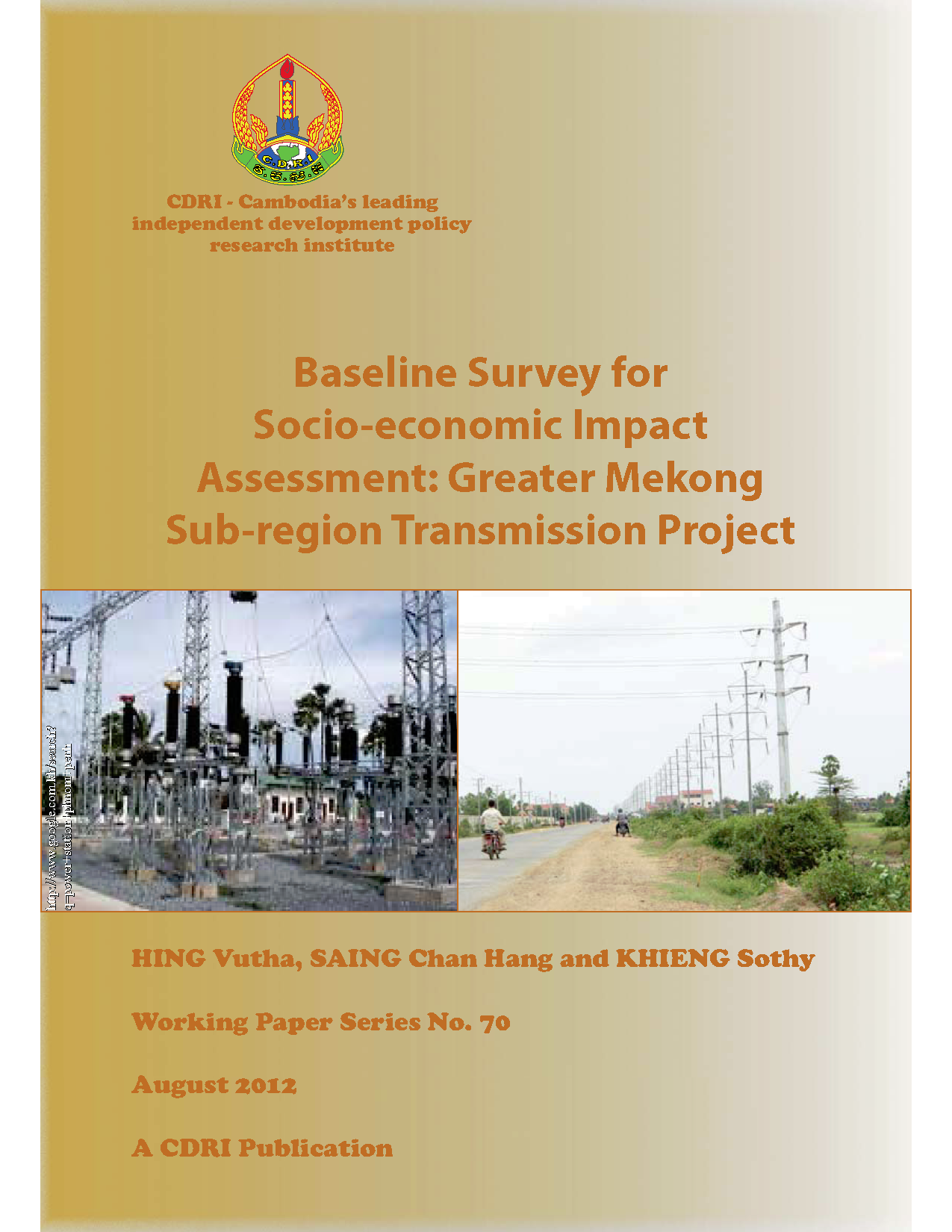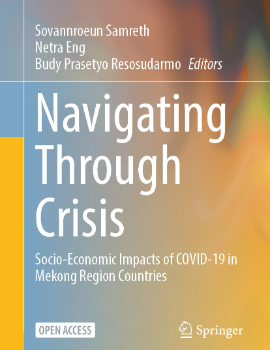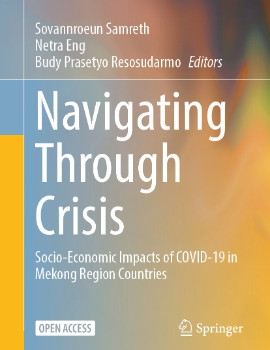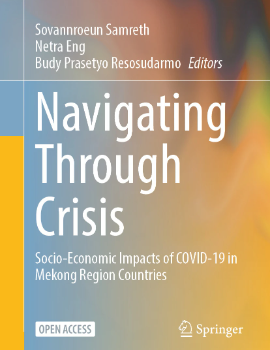
Baseline Survey for Socio-economic Impact Assessment: Greater Mekong Sub-region Transmission Project
Keyword: Baseline socioeconomic survey, Greater Mekong Sub-region, propensity score matching, energy consumption indicators, treatment and control groups
Abstract/Summary
This research
project represents the first baseline socioeconomic survey that CDRI has
conducted for the Greater Mekong Sub-region Transmission Project of Asian
Development Bank. The study was designed to develop a set of comprehensive
baseline demographic, social and economic as well as energy consumption
indicators for the project. The tools for data collection were village and
household surveys in 27 villages, of which 17 villages are potentially project
beneficiaries (treatment group) and 10 are non-beneficiaries (control group).
It then used propensity score matching method to predict the probability of
household participation (propensity score) in the two groups.
From the matching
operation, it produces favourable results for consumption, male adults’ study
time, and family and children’s teaching time, while total income differences
of households in the two groups, and income from sources such as crops, common
property resources, labour wage and remittance remain statistically
significant, albeit reduced. This indicates that after controlling for
household and village characteristics, households in the control and treatment
groups have similar consumption behaviour, total spending and time allocation
for reading and teaching at home. Although the matching operation could not
produce better results in terms of household income from different sources, the
median bias of the matching operation has been reduced substantially.
The propensity
score matching analysis enables us to see if good matches for the treatment
households can be found in the comparison sub-sample, and to consider the
possibility of dropping some of the comparison households (those with highly
different characteristics) from any follow-up survey. After matching, 35
households, which were off-support, were dropped creating the new sample of 709
reduced from 744. For follow-up evaluation study, the research team should
refer to after-match sample villages as the study site and it is hoped that the
survey costs could be reduced.
DOI: https://doi.org/10.64202/wp.70.201208



